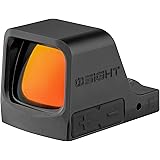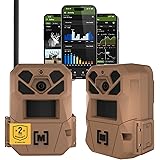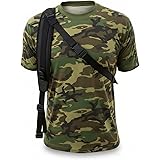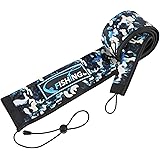Navigating the Wild: Beyond the Blade for Bear Attack Survival
Just recently, my partner and I were planning a remote hiking trip, and as always, the conversation inevitably turned to safety. What if we encountered a bear? It’s a natural worry for anyone venturing into the wilderness, sparking thoughts of preparedness and self-defense. The video above offers a rather unique and dramatic take on this critical concern, showcasing some formidable, albeit unconventional, choices for surviving a bear attack. While the Karito Battle Axe, M48 Cyclone Spear, Battle Ready Manganese Long Sword, and Titanium Scorpion Whip certainly make for compelling viewing and evoke a sense of ancient combat, real-world bear encounters demand a different kind of strategy.
Understanding effective bear attack survival goes far beyond the length of a sword or the sharpness of an axe. True preparedness hinges on knowledge, prevention, and realistic defensive tools designed for modern wilderness encounters. This exploration will delve into the types of bears you might encounter, their behavior patterns, and, most importantly, the practical steps and equipment that significantly increase your chances of safety. We will consider the entertainment value of the presented weapons, but pivot to discuss what genuinely works when facing nature’s powerful predators.
Evaluating the Video’s “Weapons”: More Fantasy, Less Field Practicality
The weapons highlighted in the video, such as the Karito Battle Axe and the 37-inch Manganese Long Sword, are undeniably impressive in their design and craftsmanship. These items are razor sharp and designed for close-quarters combat, offering a certain allure for those fascinated by historical or fantasy weaponry. However, translating their potential effectiveness from a stylized video to a real-life bear confrontation presents significant challenges and practical limitations. Envisioning oneself effectively wielding a 46-inch Titanium Scorpion Whip against a charging grizzly often falls short of the harsh realities of such an encounter.
One major issue is the sheer speed and power of a bear. A bear can cover ground incredibly fast, often reaching speeds of 35 miles per hour, making precise aiming and striking with a cumbersome weapon incredibly difficult. Furthermore, these weapons require significant training and skill to use effectively, which is not something most hikers or campers possess. The video notes the Karito Battle Axe is lightweight and easy to swing, but even so, delivering a disabling blow to a bear, especially with its thick hide and powerful musculature, is highly improbable and incredibly dangerous to attempt. Simple additions like these descriptions often overlook the complex dynamics of wildlife defense.
Moreover, using such weapons would likely escalate an already tense situation, potentially turning a defensive encounter into a life-or-death struggle where the human is at a severe disadvantage. The M48 Cyclone Spear, described as “poking the bear,” illustrates the exact opposite of what you want to do in most bear encounters. Provoking a bear with a sharp implement, rather than deterring it, could intensify its aggression. A key principle of bear safety is to avoid provoking an attack, making these close-combat tools counterproductive in most scenarios.
Realistic Self-Defense Against Bears: Proven Strategies
When discussing bear attack survival, it is crucial to focus on methods that have been proven effective and are widely recommended by wildlife experts and park rangers. The primary goal is always deterrence and de-escalation, rather than engaging in a direct fight. Proper bear attack preparedness starts long before an actual encounter, encompassing awareness, prevention, and appropriate defensive tools that respect the animal’s power and unpredictability. These practical considerations stand in stark contrast to the dramatic weaponry presented in the video.
Foremost among realistic tools is bear spray, a highly effective deterrent containing capsaicin and related capsaicinoids. This powerful aerosol is designed to create a burning sensation in the bear’s eyes, nose, and mouth, temporarily disorienting it and allowing you time to escape. Bear spray should be readily accessible, not packed away, and users must know how to deploy it correctly, aiming for the bear’s face from a distance of about 15-30 feet. This non-lethal option is statistically more effective than firearms in deterring a bear attack without causing permanent harm to the animal.
For individuals legally permitted and trained, a firearm can serve as a last resort, though its effectiveness in a sudden bear attack is highly debated and dependent on numerous factors. It is essential to carry an appropriate caliber and type of firearm, such as a large-caliber handgun or a shotgun loaded with slugs, specifically for bear defense. Furthermore, proficiency under stress is paramount; a missed shot or an improperly placed bullet can further enrage a bear. Many experienced outdoor enthusiasts prioritize bear spray due to its wider effective range and less stringent aiming requirements under du duress. Therefore, the discussion of such tools is a vital part of effective bear attack survival.
Understanding Bear Behavior: Prevention is Key
Preventing a bear encounter in the first place is always the best strategy for bear attack survival. Bears are not inherently aggressive; most attacks occur when a bear is surprised, defending cubs or a food source, or acting defensively. Understanding the behavior of different bear species, such as Black Bears, Grizzlies (Brown Bears), and Polar Bears, is vital for safe wilderness travel. Each species has distinct characteristics and preferred habitats, influencing how you should behave if an encounter occurs, thereby impacting your overall strategy for bear attack survival.
Black bears, typically smaller and less aggressive than grizzlies, often bluff charge or stand on their hind legs to get a better look. If a black bear attacks, especially if it seems predatory (stalking, quiet approach), fighting back aggressively is generally recommended. Grizzly bears, known for their distinctive shoulder hump and longer claws, are more powerful and potentially dangerous. If a grizzly attacks defensively (e.g., you surprise it near cubs), playing dead is often advised, protecting your vital organs. Conversely, if a grizzly appears to be attacking predatorily, fighting back with everything you have is crucial.
Proper food storage is another critical preventative measure. Always use bear-resistant canisters or hang food and scented items from trees, away from your campsite. Making noise while hiking can also alert bears to your presence, giving them time to move away before you get too close. Carrying a bear bell can be helpful, though talking loudly or clapping periodically is often more effective. Being aware of your surroundings, looking for fresh tracks or scat, and avoiding dense brush are also essential practices. Additionally, never approach or feed any wildlife, including bears, as this habituates them to humans and can lead to dangerous situations.
Beyond Weapons: Comprehensive Wilderness Safety
Achieving effective bear attack survival extends beyond simply carrying a defensive tool; it encompasses a holistic approach to wilderness safety. Planning your route, understanding the local wildlife, and informing others of your itinerary are all fundamental steps. Packing essential gear like a first-aid kit, navigation tools, and appropriate clothing layers can make a significant difference in unforeseen circumstances. These simple additions contribute immensely to your overall safety and peace of mind when venturing into bear country.
Furthermore, traveling in groups is generally safer than hiking alone, as a larger presence can deter bears and other wildlife. Always keep children and pets close, and never let them run ahead unsupervised. Educating yourself about common bear habitats and activity patterns, such as dawn and dusk being peak times, can help you plan your excursions more safely. Staying calm and assessing the situation are paramount if you do encounter a bear. Your response should be tailored to the specific type of bear and the nature of the encounter, demonstrating that preparedness for bear attack survival is multifaceted.
Remember, the goal is to enjoy the natural beauty of the wilderness safely and responsibly, coexisting with its inhabitants. While the concept of wielding a Battle Ready Manganese Long Sword to survive a bear attack is visually striking, pragmatic choices and informed behavior are your true allies. Equipped with knowledge, proven deterrents like bear spray, and a deep respect for wildlife, you can confidently explore the outdoors, knowing you’ve taken the most effective steps for bear attack survival.











